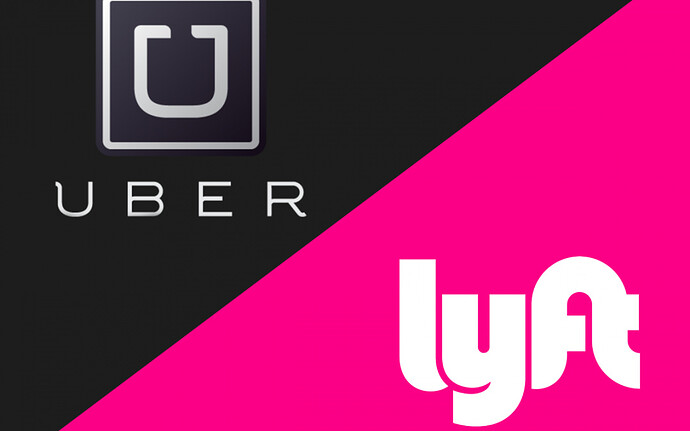If you are thinking about becoming a rideshare driver and increasing your income, then you will have a lot of considerations to make before taking this step. Driving for yourself or your family is one thing, but driving for a living, offering strangers access to your car and making yourself into a professional driver require some clear thinking and decision making.
(Source: XDA-Developers)
One of the interesting tips I can offer is starting your career with Lyft and not Uber. You ask why? Here are some considerations to take into account and tips for commencing a lucrative and exciting career as a rideshare driver.
Master Tip: You can work for both companies, so after reading this list of tips, plan out the best way you can maximize your income and bonuses.
Tip #1: Lyft offers city based sign up bonuses, this means that in some towns the sign-up bonus can reach $750-$1000, most are around $500. The sign-up bonus is trip linked, which means you will have to make a minimum of 25-100 trips to enjoy the bonus. The difference between Lyft and Uber is significant, Uber has sign-up bonuses, but they are still not as good as Lyft and not in most cities, so this is one great reason to start with Lyft.
Tip #2: While Lyft is not as popular as Uber, this can work to your advantage when starting out. The last thing you want is to be is swamped with ride-sharing from day one. It’s always best to start working slowly, learning about passengers, studying routes and ways to communicate, maintaining your car and of course, balancing the number of rideshares you want to do. After you have become adept at driving in a professional environment and become fluent in your pick-up, small talk and drop off techniques in Lyft, you can then move onto working with Uber.
Tip #3: Your driver rating in Lyft is calculated per 100 rides, while Uber calculates it rating per 500 rides. The calculations have a major difference since in Lyft you can upgrade your rating much quicker. Another consideration with ratings is a turnaround; this means how fast it will take for a rating to change if it dropped. Lyft’s rating turnaround rate is much faster due to its lower constraints.
Tip #4: Lyft company culture is still nicer than Uber’s. Lyft treats their drivers with respect while Uber just offers a service, take it or leave it. Lyft’s driver service is more efficient than Uber’s, in fact, try contacting Uber and then consider what I mean.
Tip #5: Tips. Yes, once word, tips, Lyft includes a tip feature for a passenger to add on their own accord, while Uber doesn’t so you need to add a “tip bin” to your cab. Uber allows tipping, but it’s not part of their app (now it is.)
Tip #6: Lyft offers a “power driver bonus” which means the more rides you take per week, the larger a percentage of the fare you get. This bonus does prompt you to make more rides, but if you already have a job and are using ride-sharing as an additional source of income, don’t get pulled in and damage your primary source of income. If, however, ride-sharing is your main source of income, then “power driver bonus” is a must.
Tip #7: Lyft offers a daily cash out function, it costs 50 cents, and it only works if you make at least $50, but it’s a good feature to have if you suddenly need some emergency cash.
Tip #8: Lyft will give you a free jacket after 100 rides, cool stuff! In fact, Uber and Lyft offer some company wares; you have to check up on their sites to see what is available. I know that the Uber lighted sign is a great attraction advert, and it helps your fares locate you when you arrive at a pick-up.
Tip #9: Uber will pay you a bigger sign-up if you are an experienced driver. This changes frequently, so don’t bank on this as a reason to sign up with Uber. Signing up with Uber should be done for a stable source of income, not bonuses.
Tip #10: Don’t leave Lyft, just add Uber when you are ready. You can balance your rides on a scheduling process. Just work out the best way to maximize both your personal needs and the income generated from each company. Sometimes these companies will deactivate you for some reason not both at the same time, so be prepared. If deactivation occurs, you can work with the other company until the other one reactivates you.
Tip #11: Balancing tips (tip within a tip); If a passenger dirties your car (pukes, pee’s, etc.) you can claim a cleaning fee from Uber, but then Uber will expect you to stop working for the while. Since your car will be clean after cleaning up, you can work with Lyft. Basically,y, as mentioned in Tip #10. Scheduling both companies is the trick to successfully maximizing income on a constant basis from both companies.
Tip #12: Damage control and insurance with Uber requires you stop driving for them until any damages claimed are fixed. So, until you fix your car, you can continue to work with Lyft.
To sum up, if you have a stable source of income and want to add rideshare driving as a second source of income, it’s best to start and maybe stay with Lyft. If, however, you are seeking more intense driving experience then Uber is a better choice. As far as deciding to be a driver in the first place, we suggest you consider all the responsibilities and then start with Lyft. You can always expand your scope after a few weeks.

